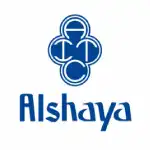Welcome to Rapidflow Inc. Cloud Offerings
We provide cloud-based solutions to increase efficiency and reduce operational costs. Our solutions are designed to help businesses save time and money. Contact us today to learn more.
AI-Driven Solutions, and Enterprise Security. We are committed to providing our customers with the highest quality products and services.
Contact us today to learn more about our offerings.
Oracle PaaS Experts à Unlock the Power of Oracle PaaS with Expert Consulting
Rapidflow transforms businesses using Oracle Platform as a Service (PaaS). Whether you're looking to develop new applications, integrate data, or analyze business processes, our experts guide you every step of the way.
Our Services
PaaS Strategy & Roadmap
Assess your current IT landscape to develop a tailored Oracle PaaS strategy that aligns with your business goals effectively.
Application Development & Modernization
Leverage Oracle APEX and Java for rapid application development while modernizing legacy applications to be cloud-native or hybrid.
Data Management & Analytics
Implement Oracle Autonomous Database for transaction processing and data warehousing, while designing data integration solutions to achieve a unified view across your enterprise.
Integration Services
Oracle Integration Cloud enables seamless connectivity between SaaS and on-premises applications, facilitating API management and development to drive digital transformation.
Security & Compliance
Ensure your PaaS solutions are secure and compliant with regulatory requirements by implementing Oracle's advanced security features for real-time threat detection.
Managed PaaS Services
Manage, monitor, and optimize your Oracle PaaS environment with proactive updates and patch management for enhanced performance and security.
Training & Enablement
Implement comprehensive training programs for your team on Oracle PaaS technologies through workshops and seminars, ensuring they stay updated on the latest advancements in PaaS.
Why Choose Us?
- Certified Oracle Experts: Our team holds the latest certifications, ensuring you receive knowledgeable and competent service.
- Custom Solutions: We don’t believe in one-size-fits-all. Our solutions are tailored to your unique business needs.
- End-to-End Support: From strategy to execution and ongoing management, we’re with you at every stage.
- Proven Track Record: With numerous successful deployments, our case studies demonstrate real-world benefits.
- Innovation Driven: We keep you ahead with the latest Oracle PaaS features and best practices.
Why Rapidflow?
- Rapidflow is a global professional services company and a leading Oracle Partner, with over 13 years of expertise and capabilities in Oracle products and technologies. The company has specialized skills across multiple industry domains and a global team of more than 250 consultants spread across office locations in the US, India, and the Middle East.
- Rapidflow offers a range of services including End-to-End Implementation, System Integration, and Application Management Services (AMS) for Oracle Fusion Cloud, Oracle E-Business Suite, NetSuite, and RPA (Robotic Process Automation). The company’s unique methodology, Rapid Discovery & Design (RD²) combines with Oracle Unified Method (OUM) to deliver efficient and effective solutions to the clients.

- Rapidflow’s team of experts with deep domain and technical knowledge, coupled with their experience in delivering large-scale, complex projects, makes it a trusted partner for Oracle-based solutions. We understand client’s unique business requirements and provide customized solutions that align with the client’s business objectives, sets it apart in the industry. Rapidflow’s focus on delivering quality solutions, on-time and within budget, ensures a rapid return on investment for their clients.
- Rapidflow is a leading consulting company in the area of Oracle Supply Chain, Product Lifecycle Management, Master Data Management and Business Intelligence. Our focus is on delivering quality solutions through its Rapidflow Implementation Methodology, with real-world experience and unmatched applications expertise, Rapidflow ensures not only implementation success but also guarantees a rapid return on investment for its clients. The company’s team-driven approach helps its clients achieve their corporate goals and maximize operational and financial performance. Rapidflow provides its customers with accelerated business flows and Oracle-based productivity solutions that help organizations improve their efficiency, visibility, and security of their business processes, and make data-driven decisions.
Case Studies

Retail Chain Expansion
- Challenge: Needed to scale IT infrastructure to support international expansion.
- Solution: Utilized Oracle PaaS for rapid application development and integration.
- Result: 50% reduction in time-to-market for new stores, improved data analytics for better inventory management.

Healthcare Provider Compliance
- Challenge: Compliance with healthcare regulations while modernizing patient care systems.
- Solution: Implemented secure, scalable databases and integration services on Oracle PaaS.
- Result: Achieved compliance with HIPAA, improved patient data accessibility, and reduced operational costs by 30%.
Get expert advice on streamlining your business. Schedule your free Consult Us

Our Clients




























































